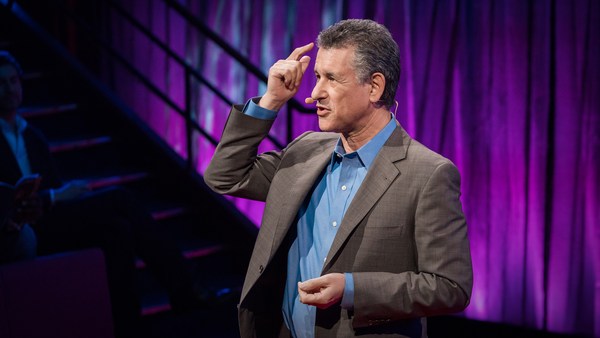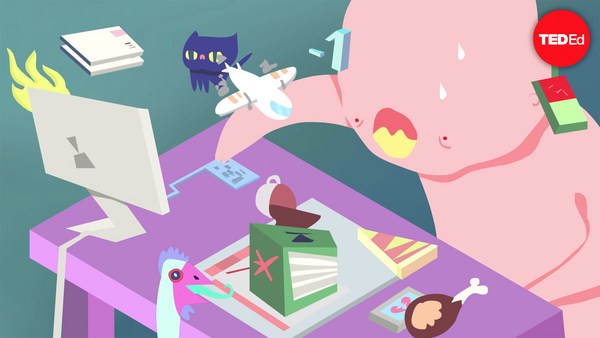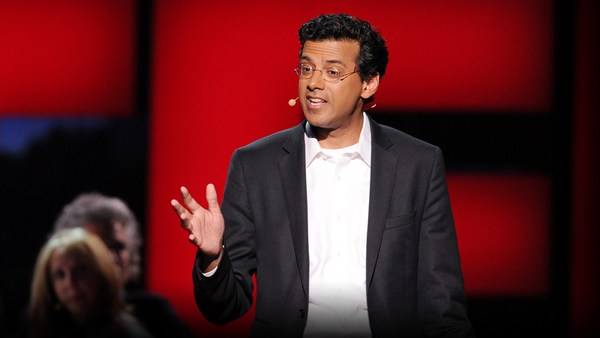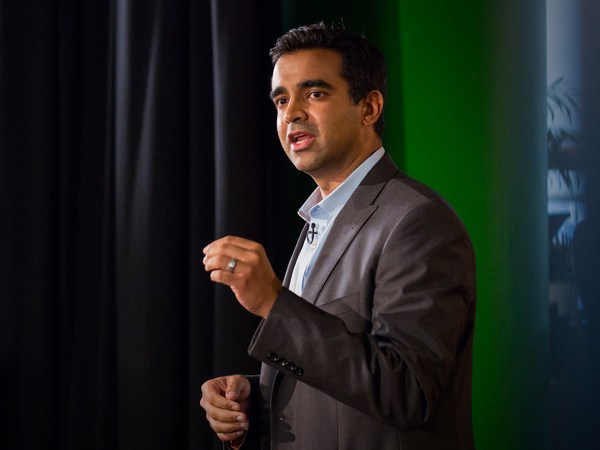Raise your hand, and be honest, if you've used the phrase "crazy busy" to describe your day, your week, your month. I'm an emergency-room doctor, and "crazy busy" is a phrase you will never hear me use. And after today, I hope you'll stop using it, too.
Here's why you cannot afford to use "crazy" to describe your busy. Because when we are in what I refer to as Crazy Busy Mode, we are simply less capable of handling the busy. Here's what happens. Your stress hormones rise and stay there, your executive function in the prefrontal cortex declines. That means your memory, your judgment, your impulse control deteriorate, and the brain areas for anger and anxiety are activated. Do you feel that?
Here's the thing. You can be as busy as an emergency department without feeling like you're crazy busy. How? By using the same tactics that we use. Our brains all process stress in similar fundamental ways. But how we react to it has been shown by research to be modifiable, whether it's emergencies or just daily, day-in, day-out stress. Now contrast Crazy Busy Mode with how I think of us in the ER -- Ready Mode. Ready Mode means whatever comes in through those doors, whether it's a multiple-car pileup, or a patient having chest pain while stuck in an elevator, or another patient with an item stuck where it shouldn't be. When you're know you're dying to ask.
(Laughter)
Even on those days when you would swear you were being punked, we're not afraid of it. Because we know that whatever comes in through those ER double doors, that we can handle it. That we're ready. That's Ready Mode. We've trained for it, and you can, too. Here's how.
Step one to go from Crazy Mode to Ready Mode is to relentlessly triage. In Crazy Mode, you're always busy, always stressed, because you're reacting to every challenge with the same response. Contrast that with Ready Mode, where we triage, which means we prioritize by degree of urgency. This isn't just a nice way to get your to-do list done. Work by Dr. Robert Sapolsky shows that individuals who cannot differentiate threat from non-threat and react to everything with the same response have double the level of stress hormones. Which is why this is the first skill to learn. You can't take care of them all at once, but you don't have to. Because we triage.
Red -- immediately life-threatening. Yellow -- serious, but not immediately life-threatening. Green -- minor. And we focus our efforts first on the reds. Now hear this. Part of the problem in Crazy Mode is that you are reacting to everything as if it is red. So start by triaging correctly. Know your reds. They're what is most important and where you can most move the needle.
Now it's easy to be confused by noise, but what it noisiest is not always what is most red. In fact, my severe asthmatic patient is most at risk when he's quiet. But my patient over here, demanding that I bring her flavored coffee creamer, she's noisy, but she's not red.
I'll give you an example from my own life. Last spring, my house flooded, my one-year-old was in the ER, I was supposed to do a fundraiser for my four-year-old's school and the final chapter of my book was beyond late. Maybe not ironically, that was the chapter on stress.
(Laughter)
My red tasks were getting my one-year-old better and finishing my book. That was it. Remember, relentlessly triage. The house flood repair? Well, once we had stopped and stabilized the damage, it was no longer a red. It felt red, but it was in fact just noise. No, no really, it was quite noisy, this picture on the far right is me wearing earplugs to focus on my book, while the floor is being mechanically dried around me. Know your reds, and do not let your non-reds distract you from them.
By the way, it is liberating with a green task to, every once in a while, be able to remind yourself, "That's a green task. No one's going to die."
(Laughter)
It's OK if it's not perfect.
Now there's one last triage level that we use in the worst scenarios. And that is black. Those patients for whom there is nothing we can do. Where we must move on. And although it is gut-wrenching, I mention it, because you each have your own equivalent black tasks in your life. These are items that you must take off your list. And I think many of you know what I'm talking about. For me, this was the fundraiser. I had to step down. Because as we in the ER know, if you try to do everything, you have no hope of saving your reds.
Step two to go from Crazy Mode into Ready Mode is to expect and design for crazy. Half of handling crazy is how you prepare for it. So if step one we triage, step two, we design to make those tasks easier to do. Science shows us that the more options we have, then the longer each decision takes. And the more decisions we have to make, the more exhausted our brain gets and the less it is capable of making good decisions. Which is why this step two is about finding ways to reduce your daily decisions.
Here are four easy examples you can use in your daily lifestyle. Plan. Plan your entire week's meals on the weekend, so that when it's Wednesday at 6pm and everyone's hangry and requesting pizza, you have no decisions to make to get a healthy meal on the table. Automate. Never leave anything to remember that you could automate, whether it's scheduling it as recurring or saved list, or recurrent purchases. Colocate. When it comes to exercise, store all the equipment that you need for a certain activity together, charged and ready, so you don't spend energy looking for it. And decrease temptations, for anyone driven by sugar cravings. Anyone? Say aye, go ahead. That itself is its own form of Crazy Mode and self-medication for Crazy Mode, but stop working your willpower. Design differently. If a food is out of immediate reach, such that you have to use a stool to reach it, even when it's chocolate, study participants ate 70 percent less without thinking about it. I know. Let that sit for a second.
(Laughter)
Design to make the choices you wish to make easier.
Which bring us to the third step to go from Crazy Mode to Ready Mode, and that is to get out of your head. Come with me. Different story. I'm working in a small, satellite ER, when a woman comes in in labor. I realize that the cord is wrapped not once but twice around the baby's neck. And I'm the only doctor. I was scared. But I couldn't let it derail me. Because, you see, we all get nervous. We all get scared, but it's what you do next that matters. That first feeling isn't the problem. It can be an important sign. The problem comes when we let it derail us. When that internal monologue starts and we catastrophize and we start to get that tunnel vision. That's how you think when you're in Crazy Mode, and you cannot solve anything that way.
Now I promise to come back to the story, but first, how do I get out of my own head? There are many tactics that you may hear, but for me, I find it best in the moment to actively put my focus on someone else. To deliberately make myself see the person in front of me, see myself in the arena with them -- what do they need, what do they fear and how can I help? This may sound like a whole lot of warm and fuzzy to you, but it's not. In fact, research shows that when you prime your brain with what is, essentially, compassion, we disrupt that tunnel vision and internal monologue. You widen your perception, so your brain can actually take in broader information, so you see more possibilities and can make better decisions. Try it. Know that your internal monologue can derail you. And realize that when you get out of your own head, you get out of your own way.
Now what happened to that baby? I focused not on my fear, but on the mother and the baby and what they needed me to do. And got the cord off of the baby's neck, and a healthy screaming, kicking baby arrived, just as the dad ran in from the parking lot, "Hi, you have a son, I'm Dr. Darria. Congratulations, you want to cut the cord?"
(Laughter)
And for a moment, the strong cries of a newborn drowned out the beeps and the sirens that are the normal sounds of the ER. But there was also something else. Because when I walked back out of that mother's room, I saw several of my other patients hovering nearby. I suddenly realized that despite their own problems that had brought them to the emergency room, they had all come together to root for this baby. And they now together shared in the joy.
Because that is what happens when you go from Crazy Mode to Ready Mode. Others notice. They want it too, they just don't know how, they just need one example. Which could be you. Own the busy. But stop calling it crazy. You've always had that ability. But now ... you're ready.
Thank you.
(Applause)





